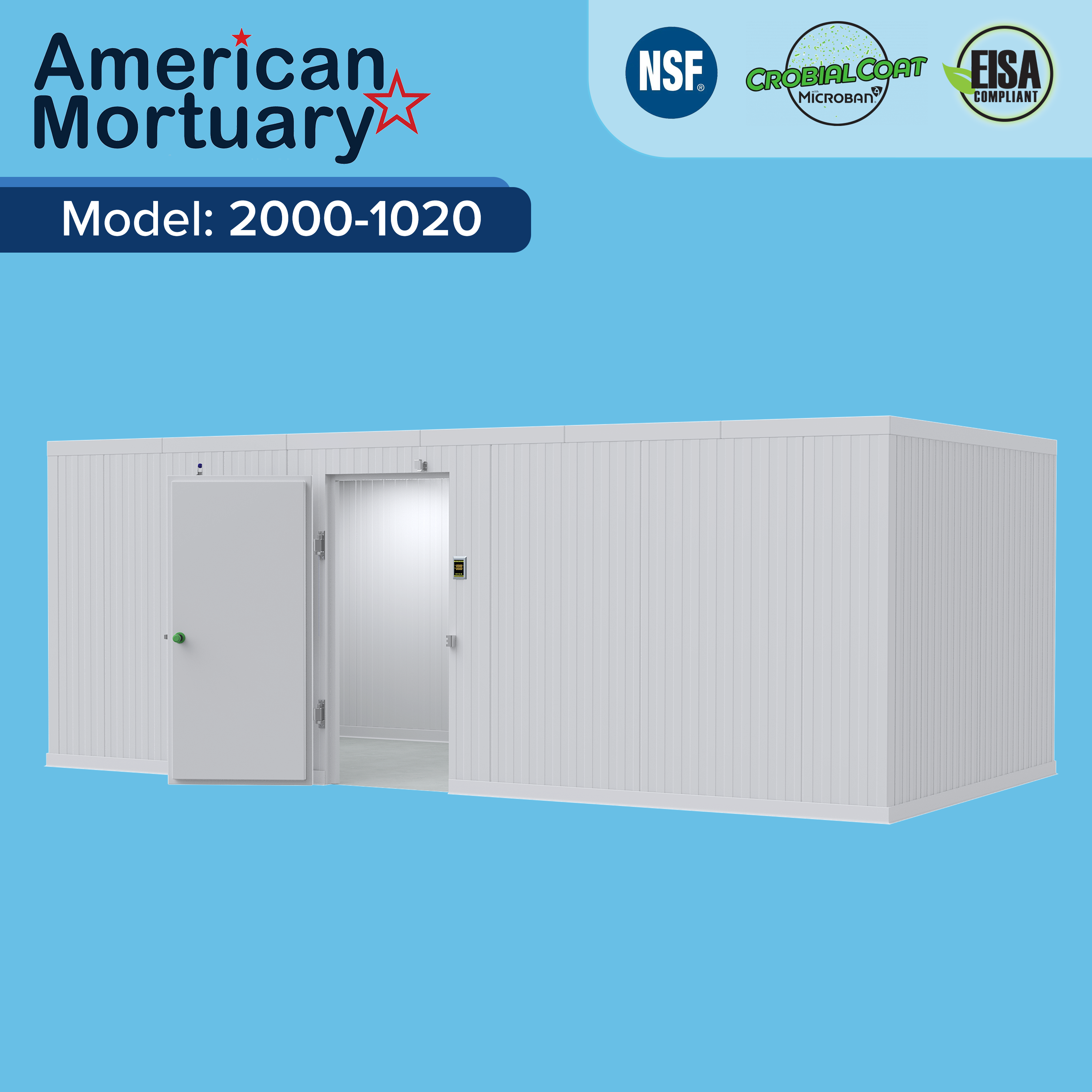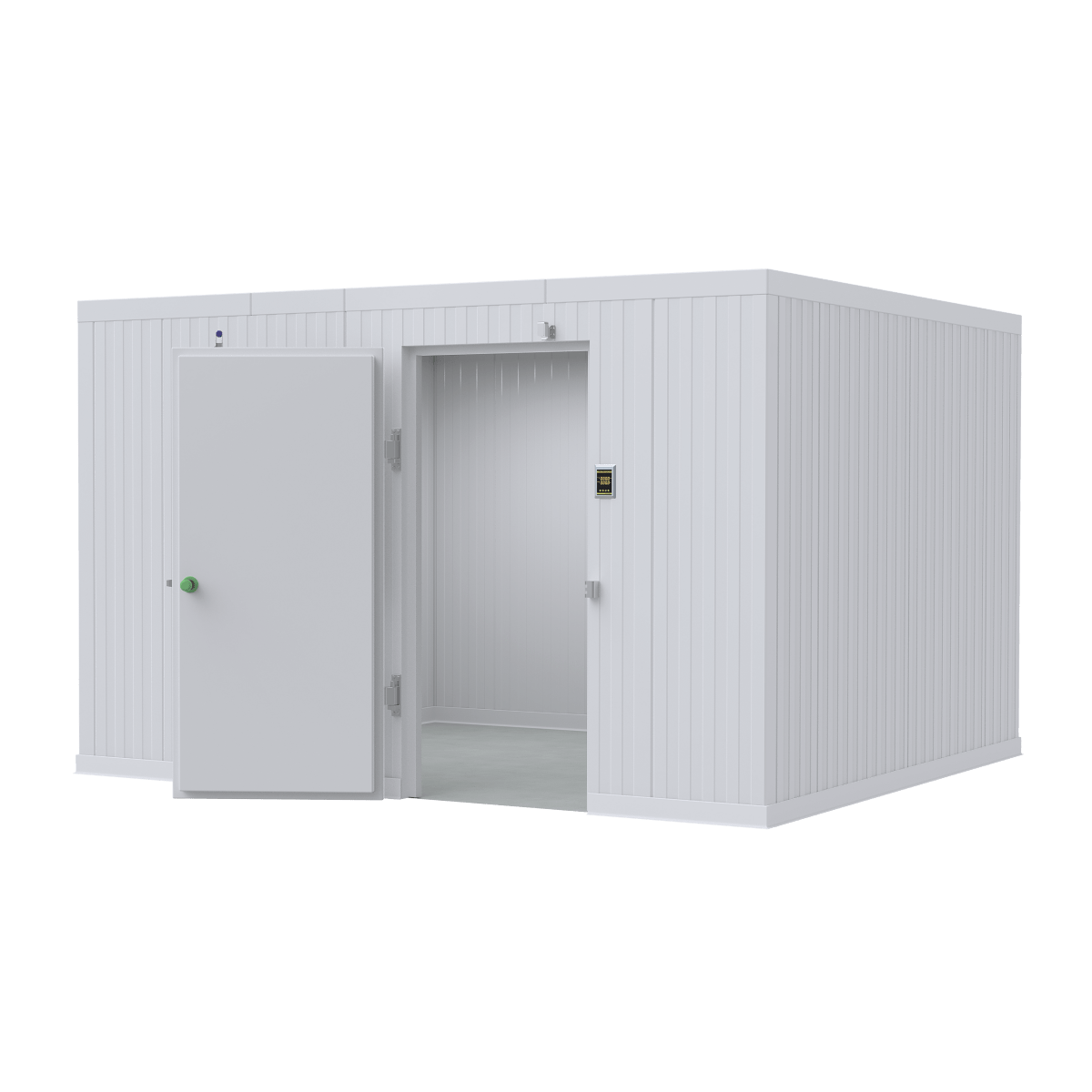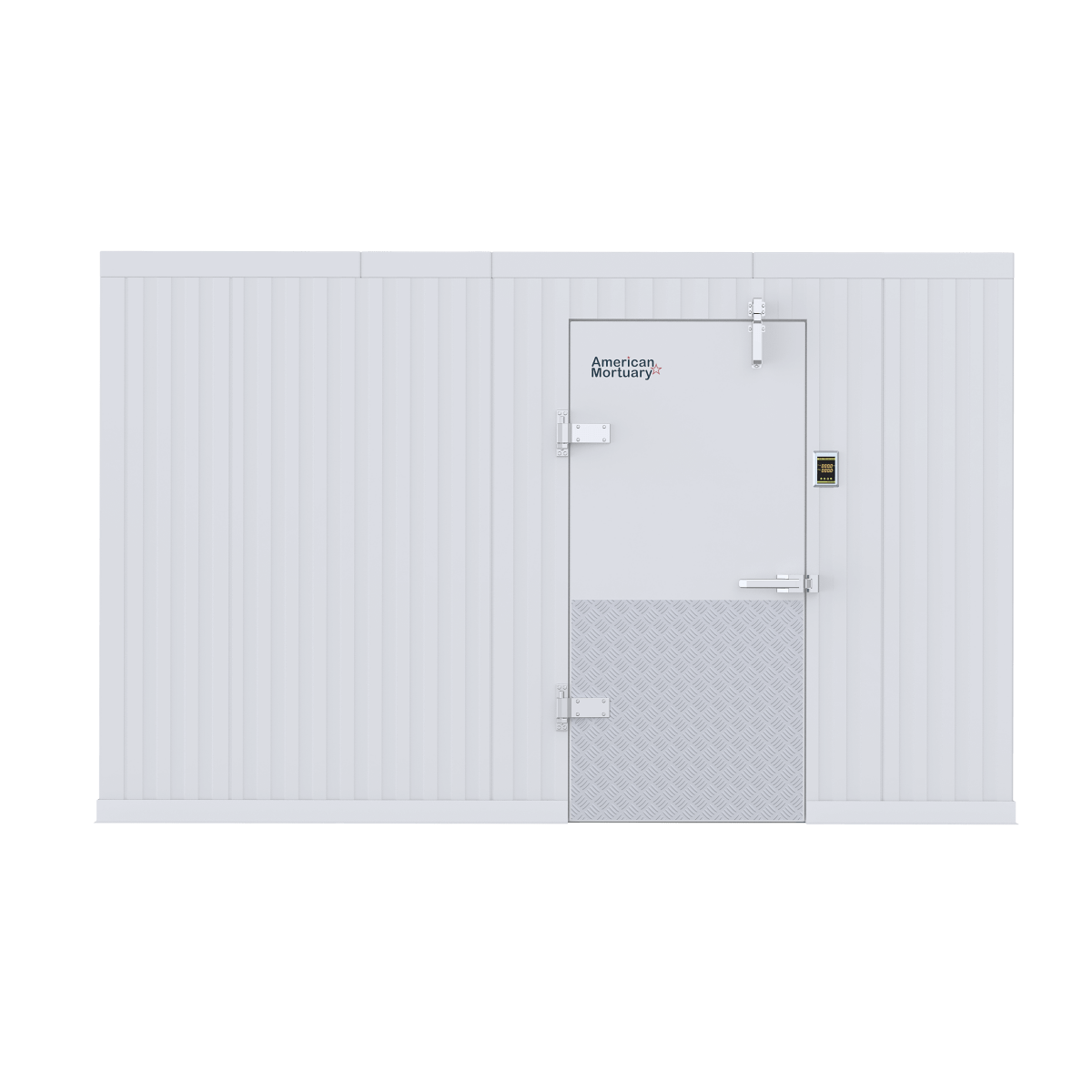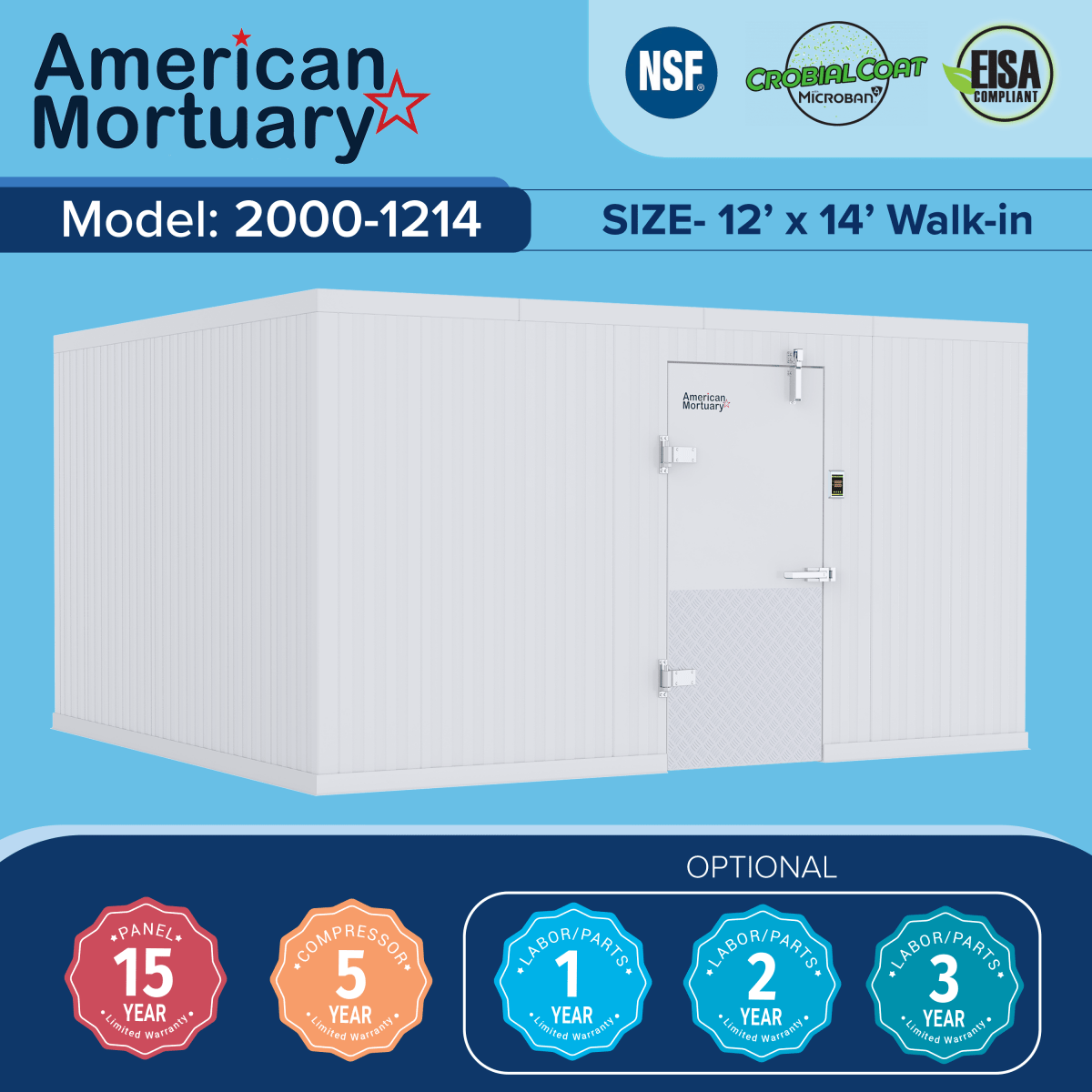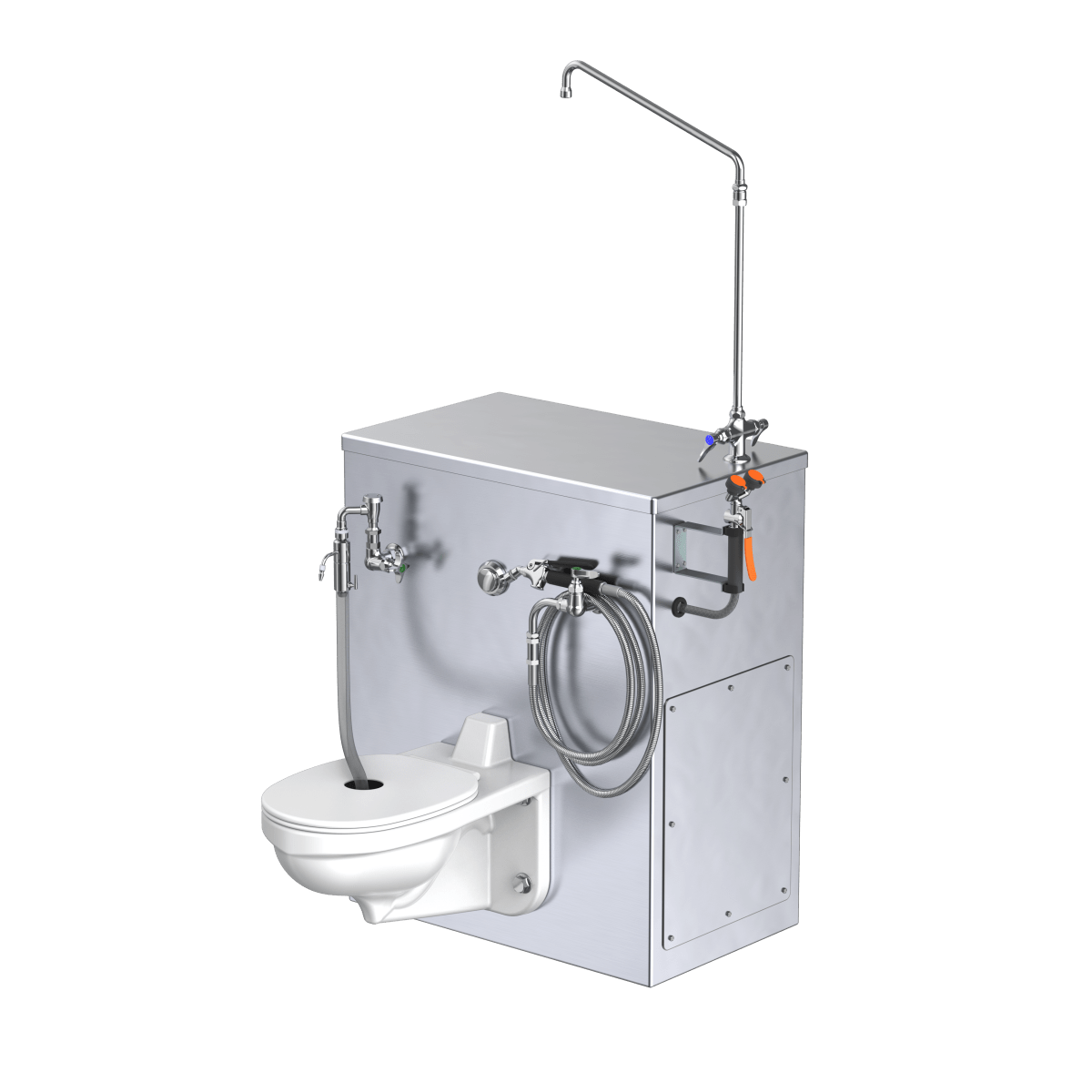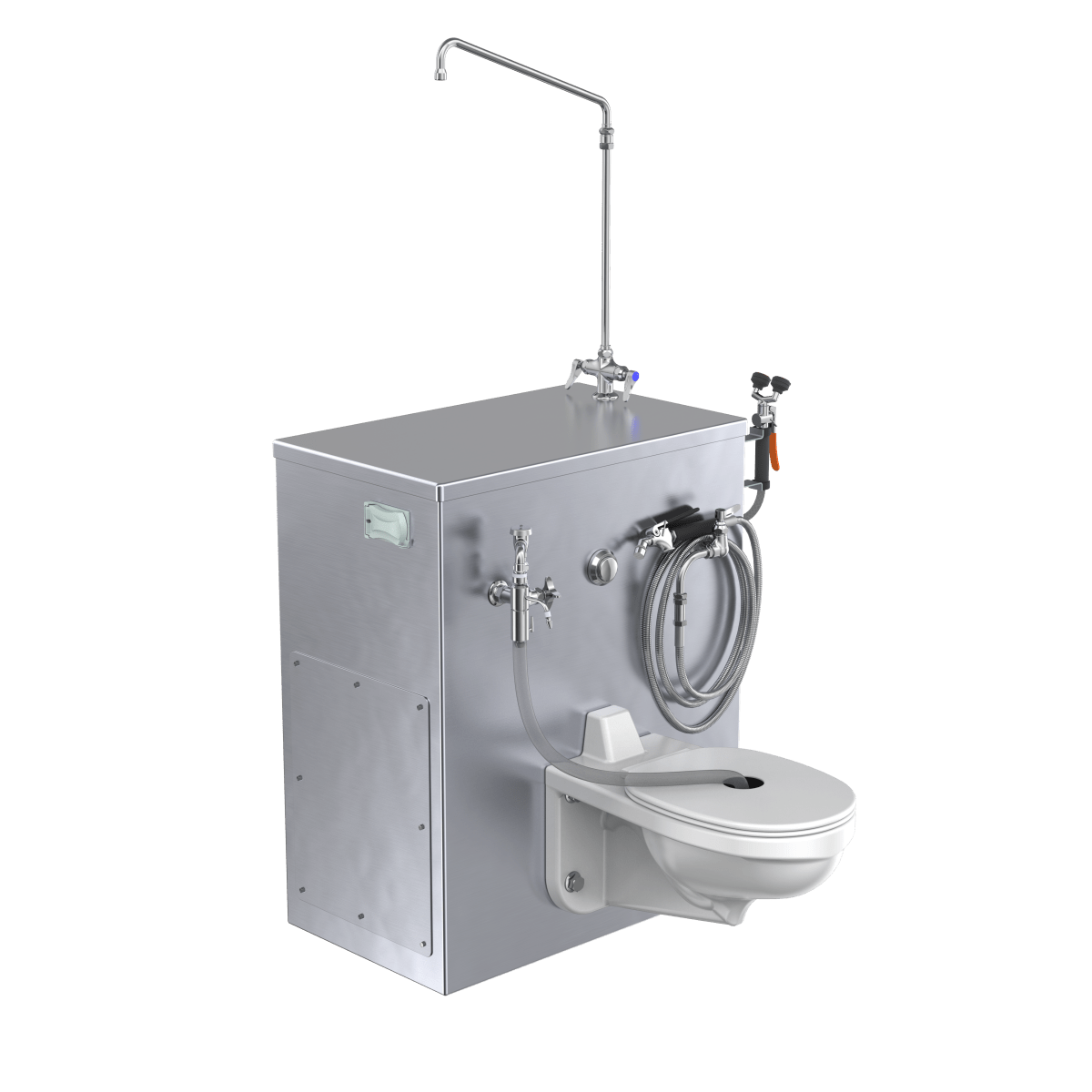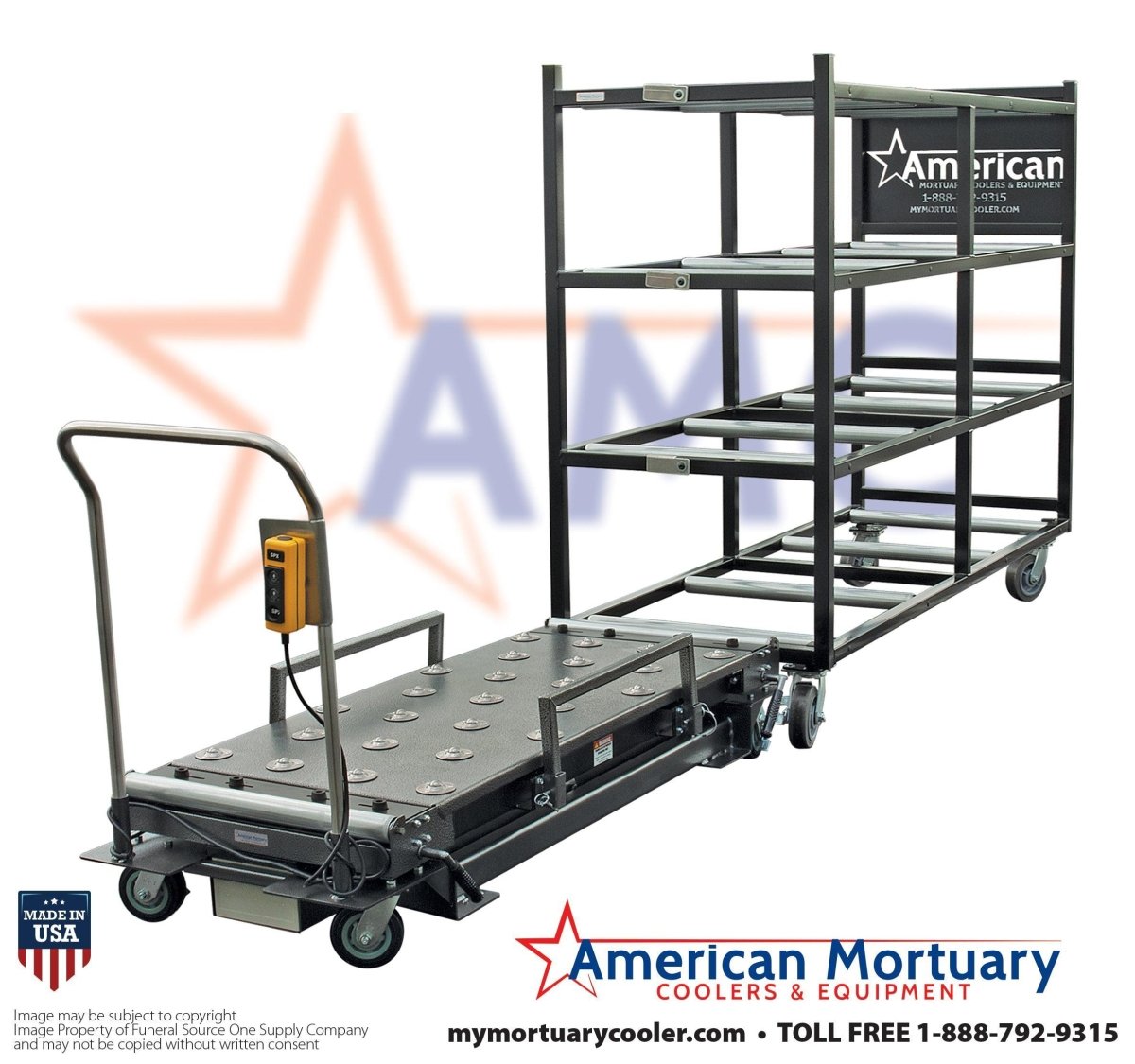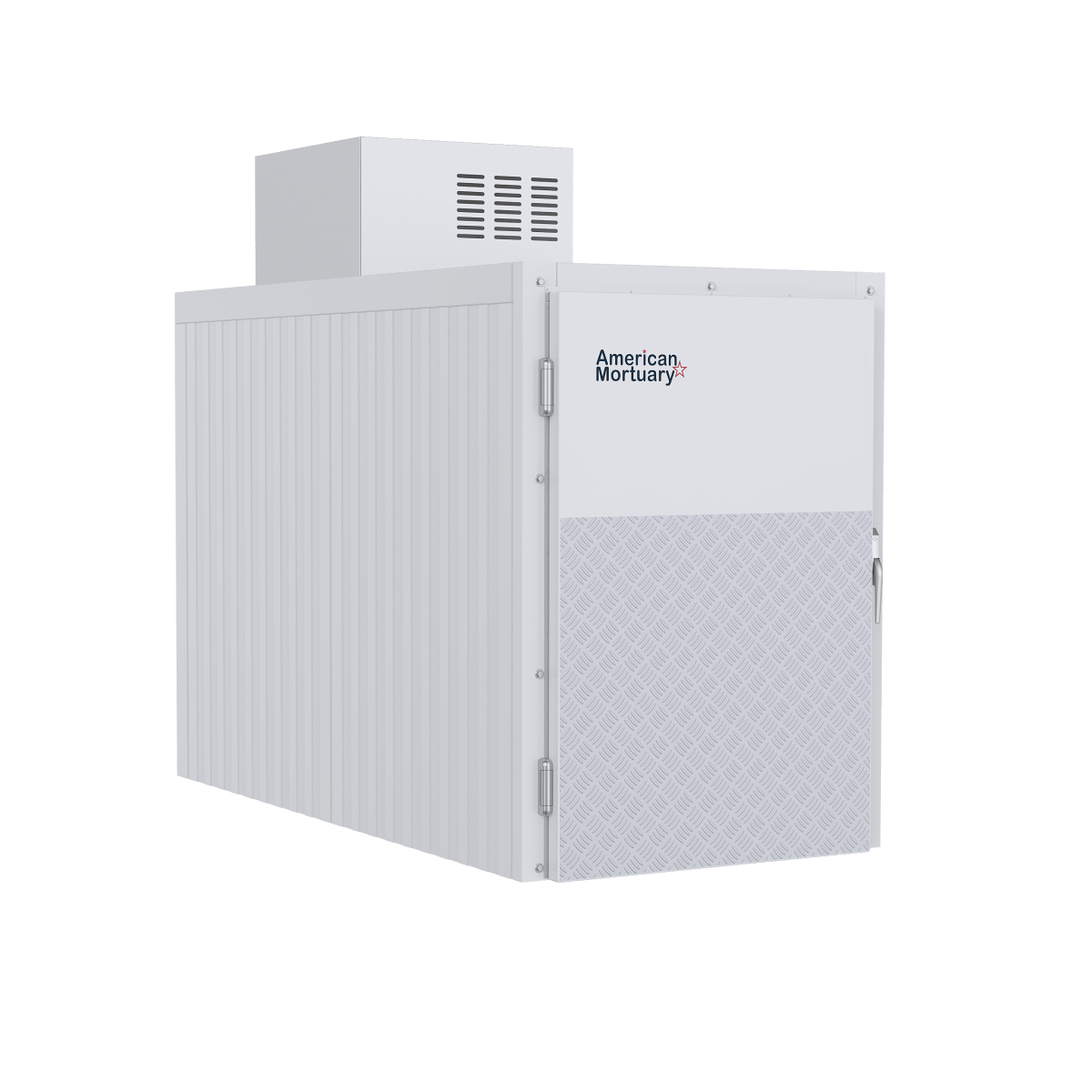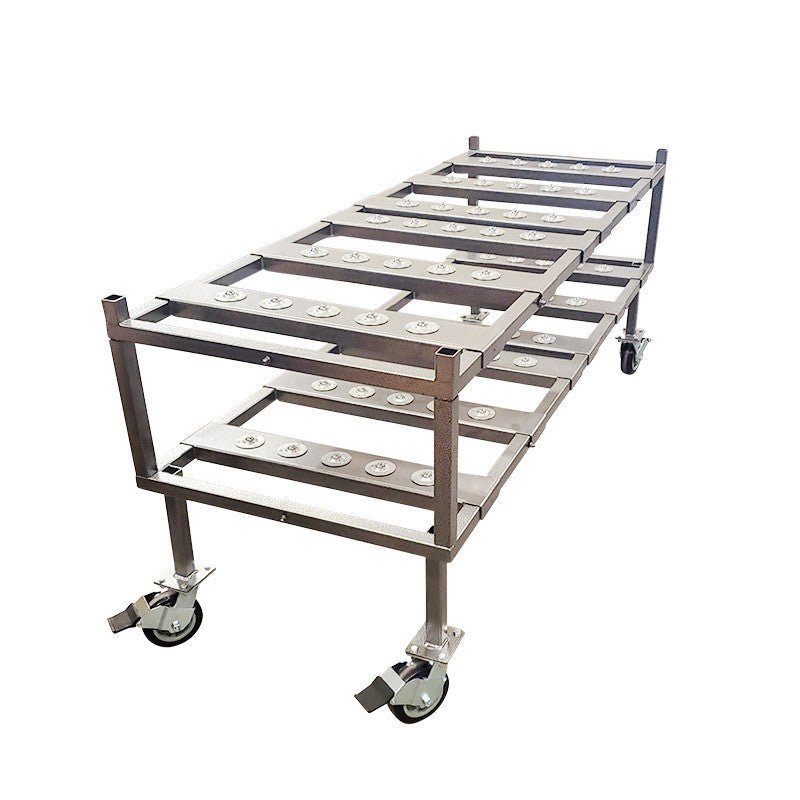Maximizing Space and Efficiency with Modular Storage
Modular rack systems are customizable storage solutions designed to adapt to changing needs through reconfigurable, standardized components. Unlike fixed shelving, these systems can be easily modified, expanded, or reconfigured as requirements evolve.
Quick Overview of Modular Rack Systems:
| Feature | Benefit |
|---|---|
| Scalability | Expand capacity by 50% compared to static shelving |
| Flexibility | Reconfigure in hours instead of days/weeks |
| Cost Efficiency | Reduce operating costs by up to 30% |
| Customization | Available in steel, aluminum, or plastic to suit specific needs |
| Applications | Warehousing, IT, laboratory, mortuary, retail, and more |
Modular rack systems have revolutionized storage across industries by maximizing both vertical and horizontal space utilization. Their adaptable nature makes them ideal for environments where storage needs frequently change or where space constraints demand creative solutions.
Organizations that implement these systems report significant improvements in accessibility, organization, and workflow efficiency—with productivity gains of up to 40% through better organization and reduced operational errors.
"Between the man-hours saved and the reduced equipment loss due to safer handling, the racks easily paid for themselves in less than 6 months," notes one satisfied user who implemented a modular solution in their facility.
The true value of modular rack systems lies in their ability to grow with your business, adapting to new products, changing inventory levels, or evolving operational processes without requiring complete replacement.
I'm Mortuary Cooler, a national-level supplier specializing in modular rack systems for mortuary applications, with extensive experience designing customized storage solutions that optimize space while maintaining proper temperature control and accessibility. My expertise spans both standard and custom modular rack systems that help funeral homes and morgues maximize efficiency while maintaining dignity in body storage.

Modular rack systems definitions:
Why This Guide Matters
If you're researching modular rack systems, you're likely facing one of several common challenges: maximizing limited space, adapting to changing inventory needs, or seeking ways to improve operational efficiency. This comprehensive guide provides up-to-date information on the latest modular rack technologies, materials, and applications to help you make informed decisions.
Recent market research indicates that the global modular shelving system market is expected to grow significantly over the next five years, driven by warehouse automation, e-commerce expansion, and the need for flexible storage solutions across multiple industries. With this growth comes innovation and new options that can be overwhelming to steer without proper guidance.
Modular Rack Systems 101: Definitions, Materials & Key Differences
Let's get you acquainted with modular rack systems before we explore specific options. Understanding what makes these storage solutions special will help you see why they might be perfect for your facility's needs.
What Is a Modular Rack System?
A modular rack system is basically the LEGO set of storage solutions. It's built from standardized pieces that snap together in countless ways, allowing you to build, take apart, and rebuild as your needs change. Unlike traditional shelving that stays put once installed, these systems feature bolt-together frames and adjustable components that adapt quickly to whatever you throw at them.
True modularity means you can add or remove pieces without starting from scratch. This flexibility is gold in environments where storage needs change frequently.
As one warehouse manager told us with a smile: "Having four dusty modules sitting in a drawer because we ran out of space used to drive me crazy. Now we just snap on another row when needed, and everyone's happy."
How Modular Rack Systems Differ From Conventional Shelving
The difference between traditional shelving and modular rack systems is like comparing a permanent wall to movable room dividers. One is fixed forever, while the other adapts as life changes.
| Feature | Conventional Storage | Modular Rack Systems |
|---|---|---|
| Adaptability | Fixed configuration | Easily reconfigurable |
| Installation Time | Days to weeks | Hours |
| Space Utilization | Typically 60-70% | Up to 90% with proper design |
| Expansion | Often requires replacement | Add-on components available |
| Cost Efficiency | Higher long-term costs | 30% reduction in operating costs |
| Customization | Limited | Extensive options |
The beauty of modular rack systems is that they can increase your storage capacity by up to 50% compared to conventional shelving. They maximize both vertical and horizontal space in ways fixed shelving simply can't match. Many of our clients report around 30% reduction in operating costs related to labor, processing time, and space utilization.
Perhaps the most impressive advantage is the speed of change. Need to reconfigure your storage? Modular systems can be rearranged in hours, while traditional shelving might take days or weeks to reinstall. When you're running a busy mortuary or funeral home, that time savings is invaluable.
Primary Materials and Their Advantages
Your modular rack system options come in three main materials, each with its own superpowers:
Steel is the heavyweight champion of rack materials. It offers unbeatable strength for heavy loads, impressive durability against daily wear and tear, and natural conductivity that matters in some specialized settings. It's 100% recyclable too, making it ideal for industrial applications or anywhere you need serious weight capacity. In the mortuary setting, steel racks provide the robust support needed for body storage while maintaining dignity and safety.
Aluminum is the lightweight contender that doesn't compromise on strength. It naturally resists corrosion (no rust!), works beautifully in clean rooms because it doesn't shed particles, and recycles with minimal energy input. Its lighter weight makes it perfect for applications where staff need to move components frequently or where building load restrictions apply.
Plastic is the chemical-resistant specialist. It shrugs off exposure to oils, chemicals, and moisture that would damage other materials. It's non-conductive (great for electrical safety), non-flammable, and environmentally friendly. For laboratory environments or areas with high moisture, plastic components offer peace of mind and longevity.
"We need different materials for different jobs," a manufacturer once explained to me. "Steel gives you that industrial-grade strength, aluminum offers clean-room compatibility with less weight, and plastic stands up to chemicals and moisture without blinking."
Environmental & Sustainability Considerations
Today's storage decisions aren't just about functionality—they're also about responsibility. Modular rack systems shine in sustainability for several reasons:
Both steel and aluminum components are 100% recyclable, dramatically reducing end-of-life waste. The modular nature means components can be reused in new configurations rather than thrown away. Their durable construction reduces replacement frequency, and the ability to evolve rather than replace entire systems cuts down on manufacturing impacts.
By maximizing space efficiency, these systems can even reduce your building's overall footprint and associated environmental impacts. Some forward-thinking manufacturers now offer "Eco-Pipe" options specifically designed with environmental considerations in mind—maintaining structural integrity while treading more lightly on our planet.
At American Mortuary Coolers, we understand that even in the funeral industry, sustainability matters. Our modular solutions are designed not just for today's needs, but for tomorrow's world.
Major Types & Industry Applications
The world of modular rack systems is incredibly diverse, with solutions custom for virtually every storage challenge imaginable. From lightweight office shelving to industrial-strength warehouse systems, there's a modular solution for every need.

Light-, Medium- & Heavy-Duty Modular Rack Systems
When shopping for modular rack systems, one of the first decisions you'll face is choosing the right weight capacity for your needs.
Light-duty systems are your go-to for everyday storage needs. With weight capacities up to about 550 pounds per shelf, they're perfect for offices, retail backrooms, and smaller warehouses. Think of these as the friendly workhorses of storage – they handle your tools, spare parts, and everyday inventory items without breaking a sweat or your budget. The beauty of these systems is their simplicity – most can be assembled without specialized tools, making them ideal for businesses that need quick storage solutions.
Moving up the capacity ladder, medium-duty systems offer that sweet spot between everyday storage and industrial-strength needs. Supporting between 550 and 1,500 pounds per shelf, these versatile systems shine in warehouses, distribution centers, and manufacturing facilities. I've seen automotive manufacturers transform their operations with medium-duty pipe-and-joint racks that can be quickly reconfigured with each model change – a perfect example of modularity in action.
When serious weight comes into play, heavy-duty modular systems step up to the challenge. These robust solutions handle 1,500+ pounds per shelf and are built with reinforced steel construction and heavy-gauge components. As one warehouse manager told me, "Our heavy-duty system has survived two facility relocations and still looks brand new. The ability to reconfigure it each time has saved us thousands."
Many of these systems offer clever stacking accessories – components like AF-STACK and AC-SKID that allow you to create temporary or seasonal storage that can stack up to three units high. It's like having expandable storage that grows and shrinks with your seasonal needs.
Mobile & Multi-Tier Solutions
Space constraints pushing you to get creative? Mobile rack systems might be your answer. By mounting entire rack units on rails or casters, these ingenious systems eliminate the need for permanent aisles between every row. The result? Up to 50% more storage in the same footprint.
"We were facing a costly building expansion until we finded mobile racks," shared the director of an archive facility. "Now we simply slide the racks apart to access what we need, and our storage capacity doubled overnight."
Looking up can be just as effective as looking around. Multi-tier rack systems transform unused vertical space into productive storage areas by creating multiple levels of racking with walkways and stairs. These systems are particularly popular in e-commerce fulfillment centers and distribution warehouses with high ceilings. One warehouse design specialist put it perfectly: "Why expand outward when you can expand upward? Multi-tier systems essentially multiply your floor space without touching your building footprint."
Specialized Modular Rack Systems for Niche Sectors
Beyond general storage, modular rack systems have evolved to address highly specialized industry needs.
In the tech world, data center and telecom racks feature standardized 19-inch enclosures with integrated cable management and cooling systems. These specialized racks don't just store equipment – they create an ecosystem that protects sensitive technology while maintaining optimal operating conditions.
Laboratory environments demand their own specialized solutions. With chemical-resistant materials and precise adjustability, lab racks integrate seamlessly with fume hoods and other specialized equipment. The aluminum construction makes them perfect for clean room applications where particulates must be minimized.
In our specialty area, mortuary cooler rack systems represent the perfect blend of functionality, dignity, and efficiency. These systems feature telescopic racks with stainless steel construction and easy-glide mechanisms that provide respectful, space-efficient storage. At American Mortuary Coolers, we've seen how our modular solutions can scale from small facilities to large operations. Our walk-in coolers with modular rack systems can be customized to accommodate anywhere from 2 to 50 bodies, making them adaptable to facilities of all sizes. For more specialized information, our guide on Rack and Roll: Top Mortuary Body Racks for Your Needs covers everything funeral professionals need to know.
Automotive manufacturing has acceptd modularity with custom rack systems that incorporate poka-yoke design principles (error prevention) to reduce defects by up to 25%. These specialized racks not only store parts but often become integral components of the production process itself.
Even musicians have their own modular systems – Eurorack modular systems feature standardized dimensions for electronic music equipment, allowing artists to expand their setups row by row as their needs grow.
Real-World Case Snapshots
The true value of modular rack systems shines through in real-world applications. Take the Atlanta distribution center that combined mobile and multi-tier systems to increase storage capacity by 40% while reducing order picking time by 35%. Their ability to reconfigure specific areas for seasonal demands without disrupting overall operations proved invaluable during peak periods.
In the mortuary sector, we worked with a forensic pathology laboratory that needed to triple their capacity from 15 to 50 bodies without major construction. Using our modular walk-in cooler panels with a five-tier cantilever rack system, they achieved their capacity goals while maintaining proper temperature control and easy access. The phased implementation minimized disruption to their sensitive daily operations.
The versatility of these systems extends beyond industrial applications into personal use as well. DIY travelers are increasingly turning to modular rack systems for their trip vehicles. Owners of Sprinter vans (2007-2024), RAM Promasters (2014-2024), and Ford Transits (2015-2024) are installing modular roof racks that allow for customized mounting of solar panels, gear storage, and equipment that can be reconfigured for different trips. As one van enthusiast told me, "My rack system changes with every trip – mountain bikes for summer, ski gear for winter, and extra storage for those longer journeys."
Customization, Accessories & Integration
The true power of modular rack systems lies in their adaptability through customization and integration with other systems. This section explores how these systems can be custom to your specific needs and improved with accessories that transform basic storage into highly efficient operational solutions.

Configurable Components & Add-Ons
When you invest in a modular rack system, you're not just buying shelves – you're creating a customized storage solution that grows with your needs. Most manufacturers offer CAD design services to help you visualize your perfect setup before making a purchase, ensuring the final system fits your space like a glove.
The beauty of these systems is how they can be improved with accessories that dramatically improve functionality. Shelving options range from solid shelves for general storage to wire mesh designs that improve air circulation – perfect for environments where ventilation matters. For specialized needs, you might opt for perforated shelves, sloped display shelves, or pull-out designs that improve access to stored items.
To keep things organized, consider adding dividers and partitions that create dedicated spaces for different items. Bin holders, label systems, and drawer units make finding what you need quick and easy – saving valuable time in busy environments. One funeral home director told us: "The labeled drawer system we installed cut our supply retrieval time in half, which means more time focusing on families."
Need your rack to move? Casters and mobility components transform static storage into flexible, mobile solutions. Heavy-duty casters with locking mechanisms provide stability when needed and mobility when it's time to reconfigure. For fixed installations, leveling feet and floor anchors ensure your rack stays secure, even when fully loaded.
Safety should never be an afterthought, which is why many of our clients incorporate guardrails, safety nets, and anti-collapse systems into their designs. These simple additions can prevent accidents and protect both inventory and staff. Load indicators also help prevent dangerous overloading situations by providing visual cues when weight limits are approached.
For IT and electronics storage, cable management becomes essential. Vertical cable managers, high-density trays, and specialized D-rings keep cables organized and prevent the dreaded "cable spaghetti" that can plague technology installations. As one IT manager put it, "Good cable management isn't just about looks – it's about maintenance efficiency and preventing equipment damage."
Integrating Automation & Electronics
The modern warehouse or facility often combines modular rack systems with automated technology to create incredibly efficient workflows. Gravity-fed conveyor shelving lets products naturally flow to picking positions, while powered conveyor connections can link different storage zones into one seamless system.
Many of our clients are now incorporating pick-to-light systems that use LED indicators to guide workers to the correct storage location – reducing errors and training time. These systems can reduce picking errors by up to 25% in busy environments, making them particularly valuable during peak seasons.
The rise of robotics has led to specially designed robot-accessible shelf configurations that allow automated pickers to retrieve items without human intervention. These systems can work around the clock, dramatically improving throughput in distribution centers. Collaborative robot workspaces create safe zones where humans and machines can work side by side, each handling the tasks they do best.
For specialized applications like mortuary storage, temperature monitoring systems are absolutely critical. These integrated sensors provide real-time alerts if conditions fall outside acceptable ranges, protecting sensitive contents. Similar systems can be applied to inventory tracking, with RFID integration allowing automatic updates to inventory management software whenever items are moved.
The Speedgoat HIL (Hardware-in-the-Loop) platform shows just how sophisticated these integrations can become, supporting complex electronic testing environments within a standardized rack framework. As one engineer noted: "Integrating all necessary components into a standardized yet modular rack significantly reduces development time."
Industry-Specific Customization Examples
Different industries have unique storage challenges, and modular rack systems can be custom to address these specific needs. In laboratory environments, chemical-resistant surfaces are essential, along with integrated utility connections for gas, water, and vacuum. These specialized systems create efficient workflow stations that maximize limited laboratory space while meeting strict safety requirements.
The automotive industry has acceptd an ingenious approach called poka-yoke storage (mistake-proofing). Each storage location is custom-shaped to accept only the correct part, preventing assembly errors. "It's like those children's toys where kids match shapes to holes," explained one manufacturing engineer. "It makes the process intuitive and virtually error-proof." These systems have reduced defect rates by up to 25% in some facilities.
For our core business at American Mortuary Coolers, we specialize in walk-in coolers with integrated modular rack systems. Our designs feature telescopic rack mechanisms crafted from 3/16 inch aluminum extrusion with nylon rollers and bronze bushings that ensure smooth extension even under load. These racks can extend up to three-quarters of their length while securely supporting storage trays, and our custom configurations can accommodate anywhere from 2 to 50 bodies depending on facility needs.
The audio/visual world has its own specialized requirements, addressed by systems like the VoidRack AV setup. These feature the standardized 19-inch rack width common in IT and audio equipment, with hybrid power systems that combine switching and linear supplies for clean, noise-free operation. The tool-less assembly allows quick reconfiguration between venues – a crucial feature for touring productions.
At American Mortuary Coolers, we've seen how the right modular rack system can transform operations. One funeral home we worked with increased their capacity by 40% without expanding their building footprint, simply by implementing a more efficient modular storage solution. The customized design not only improved their storage capacity but also created a more dignified and organized environment for their most sensitive work.
Benefits, Safety, Installation & Maintenance
Implementing modular rack systems offers numerous operational advantages, but proper attention to safety, installation, and maintenance is essential to maximize these benefits and ensure long-term performance.

Key Operational Benefits of Modular Rack Systems
When businesses invest in modular rack systems, they're often amazed by the immediate change in their operations. Space utilization jumps dramatically – most facilities report increasing from the typical 60-70% utilization of conventional systems to an impressive 90% with properly designed modular solutions. This isn't just about squeezing more stuff into the same footprint; it's about intelligent design that optimizes vertical storage while creating purposeful zones for different product categories.
The workflow improvements are equally impressive. I've seen companies boost their efficiency by up to 40% after implementing a thoughtfully designed system. Workers spend less time traveling between picking locations, inventory becomes organized by how frequently items are accessed, and the entire operation simply flows better.
The financial benefits tell an equally compelling story. Most organizations report around 30% reduction in operating costs related to labor and processing time. Since you can replace individual components rather than entire systems, maintenance costs drop significantly too. One manufacturing client told me, "We've cut product damage by nearly a quarter since installing the new racks – the savings alone covered our investment within the first year."
What truly sets modular rack systems apart is their adaptability. As one warehouse manager shared with me: "What impressed us most wasn't just the immediate space savings, but how easily we could adapt when our product mix changed six months later. Instead of a complete overhaul, we simply reconfigured the existing modules."
Safety & Risk Reduction Best Practices
Safety isn't just a checkbox with storage systems – it's an ongoing commitment that starts before the first component arrives. Begin with a thorough risk assessment that evaluates your specific loads, environmental conditions, traffic patterns, and potential hazards unique to your operation.
Staff training becomes your next line of defense. Everyone who interacts with your modular rack systems should understand proper loading techniques, weight distribution principles, and how to spot warning signs of wear or damage. At American Mortuary Coolers, we emphasize training on emergency procedures and proper use of safety equipment, especially for our specialized mortuary applications.
Clear communication through proper signage makes a world of difference. Every rack should display its load capacity rating in a visible location. Aisle markers, identification systems, and adequate lighting aren't just conveniences – they're safety essentials that prevent accidents before they happen.
Don't overlook the value of additional safety equipment. In high-traffic areas, guardrails provide crucial protection. Column protectors shield vulnerable points from impact damage, while safety netting secures overhead storage. These simple additions dramatically reduce accident risk.
For our mortuary clients, we ensure all rack systems comply with OSHA regulations and include specialized safety features like emergency release handles. We've created a comprehensive guide about morgue rack safety that dives deeper into these specialized considerations.
Installation & Reconfiguration Tips
A solid foundation makes all the difference when installing modular rack systems. Before assembly begins, ensure your floors are level and structurally capable of supporting the fully loaded rack weight. Any concrete cracks or uneven surfaces should be addressed immediately – they only become bigger problems later. For taller racks or heavier loads, proper floor anchoring is non-negotiable.
When assembly day arrives, precision matters. Follow the manufacturer's torque specifications exactly – not too tight, not too loose. Use a plumb line or level to verify that vertical uprights are truly vertical. Install all safety clips or pins as directed, and double-check that every component is properly seated and secured.
Many of today's modern systems feature tool-less assembly that makes installation and reconfiguration remarkably simple. Lever-action cam-locks for walk-in cooler panels, quick-connect frame components, and drop-in shelf designs have transformed what used to be a complex project into something much more manageable. As one system designer explained to me, "The tool-less row clamps enable solid assembly without any tools, making reconfiguration a matter of minutes rather than hours."
For complex installations, I recommend color-coding components by zone and working methodically from a detailed setup drawing. While many facilities handle their own installations, consider professional setup for your initial configuration, with training for your team to handle future modifications.
Maintenance & Inspection Checklist
Regular maintenance isn't just about preventing failures – it's about extending the life of your investment and ensuring ongoing safety. Establish a routine that includes weekly visual inspections where staff check for visible damage to uprights, beams, and shelves. Verify that safety devices remain in place, loads are properly distributed, and there's no evidence of impact damage.
Monthly, you'll want to dig a bit deeper. Inspect all connections and tighten as needed, verify that floor anchoring remains secure, check the alignment of uprights, and examine wire decking for any deformation.
Quarterly comprehensive inspections should measure any beam deflection, check for corrosion (especially in humid environments), verify that load capacity signage remains visible and accurate, and inspect specialized components like roll-out shelves or dividers.
I strongly recommend an annual professional assessment. Having a rack safety expert perform a thorough evaluation provides peace of mind and often catches issues before they become problems. Document all findings, make corrections promptly, and update your training based on what you learn.
For refrigerated systems like our mortuary coolers, additional checks are essential. Door gaskets and seals must remain intact, refrigeration components need regular verification, condensate drainage systems must stay clear, and temperature consistency across all rack positions requires monitoring. These specialized checks ensure the integrity of stored remains and the reliability of your cooling system.
Frequently Asked Questions about Modular Rack Systems
What load capacity should I specify?
Choosing the right load capacity involves more than just weighing what you'll store. Start with the weight of your items and add a safety margin of 15-20%. Consider access frequency – frequently accessed items may benefit from lighter-duty, more adjustable systems. Think about future needs and potential changes in product weight or volume.
For general guidance, light-duty systems handle up to 550 lbs per shelf, medium-duty ranges from 550-1,500 lbs per shelf, and heavy-duty supports 1,500+ lbs per shelf. When planning heavy-duty installations, especially in multi-tier configurations, consulting with a structural engineer is always a wise investment.
How often should racks be inspected?
Safety-conscious facilities follow a tiered inspection schedule. Daily visual checks by operators catch obvious issues. Weekly documented inspections by supervisors provide more thorough oversight. Monthly detailed inspections of components help identify developing problems. An annual comprehensive professional assessment ensures nothing is missed.
For specialized applications like mortuary storage, where system failure could have serious consequences for dignity and preservation, we recommend more frequent inspections and preventive maintenance. At American Mortuary Coolers, we help our clients develop customized inspection schedules based on their specific usage patterns and environmental conditions.
Can I integrate existing automation with modular racks?
Yes! Most modular rack systems play nicely with existing technology. Whether you're using conveyor systems (powered or gravity), automated guided vehicles, pick-to-light systems, or warehouse management software, integration is usually straightforward with proper planning.
The key to successful integration is ensuring dimensional compatibility, verifying that load capacities align, planning for power and data connectivity, and allowing adequate maintenance access. Many manufacturers (including us) offer consulting services to help plan these integrations effectively, saving you time and preventing costly mistakes.
Conclusion
Let's be honest – storage isn't the most exciting topic until you realize how much time and money the right system can save you. Modular rack systems have transformed how businesses handle storage, offering something traditional fixed shelving simply can't: the freedom to adapt as your needs change.
Throughout this guide, we've explored how these versatile systems work across industries, from massive warehouses to specialized settings like our own mortuary coolers. The beauty of modular design isn't just about having shelves – it's about creating a storage solution that evolves with you.
When you choose a modular rack system, you're investing in:
Flexibility that grows with you. Rather than replacing entire systems when needs change, simply reconfigure what you have. One funeral director told us, "We expanded from serving 15 families to 30 per month, and our storage adapted right along with us – no construction required."
Materials matched to your environment. Whether you need the strength of steel, the lightweight corrosion resistance of aluminum, or the chemical-resistant properties of plastic, there's a material designed specifically for your application.
Peace of mind through safety. With proper installation and regular maintenance, these systems provide reliable, secure storage for even the most sensitive items. This is especially important in our industry, where dignity and respect are paramount.
Customization that solves problems. From specialized drawers to cable management systems, the right accessories transform basic storage into workflow solutions that actually make your job easier.
Systems that work together. Modern modular rack systems don't exist in isolation – they integrate with everything from conveyor systems to temperature monitoring, creating comprehensive operational solutions.
At American Mortuary Coolers, we understand that storage in the funeral industry comes with unique challenges. That's why we've specialized in creating custom modular rack solutions that maintain proper temperature control while providing the accessibility and respect families deserve.
Based in Tennessee but serving funeral homes, morgues, and forensic facilities across all 48 contiguous states, we combine our expertise in refrigeration technology with efficient storage design to create systems perfectly matched to your specific needs.
Whether you're expanding your current facility, replacing outdated equipment, or planning something entirely new, we're here to help you design a storage solution that works for you today and adapts to what you'll need tomorrow.
To learn more about our specialized mortuary refrigeration solutions and how modular rack systems can improve your facility's efficiency, visit our comprehensive resource: More info about mortuary refrigeration solutions.
Let's create storage that works as hard as you do. Contact us today to start the conversation.



